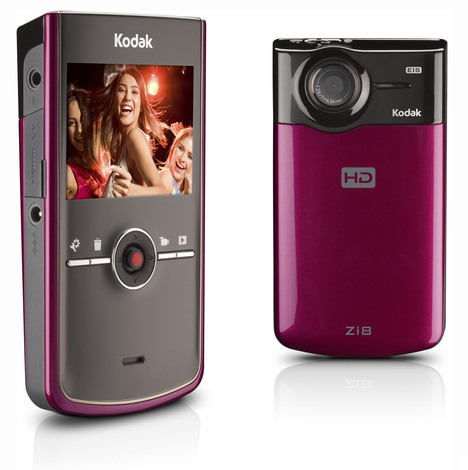The CustomXM – Kodak Video Challenge – Enter and you may win!
There are vendors, and there are partners. Kodak is one of our partners. Over the past three years, Kodak has played an instrumental role in helping us expand our offering of digital printing solutions. In addition to these successes, this relationship has lead to numerous award recognitions over that past several months. As a result, Kodak will soon feature CustomXM in a series of print, on-line, and trade publications.
But this recognition is not about the awards. It’s about our success in adapting to the digital world around us. It’s about the solutions we provide for our clients. And, it’s about how we interact with you.
Now we are beginning a fun new venture together. As part of our continuing, combined efforts to show CustomXM as a thought leader and innovative solutions provider, we are attempting to expand the reach, awareness, and influence of the graphic communications industry through a series of videos.
And we need your help. We need your ideas. And we want to have some fun! So here’s what we want you to do: Give us some ideas for a short one to two minute video. Videos will be filmed in our facilities, using a Kodak Zi8 HD video camera. One lucky winner will win their own Kodak Zi8 HD video camera. This lucky winner will be selected from all the qualified entries. To be considered for entry into our Video Challenge contest, your idea MUST include:
- The concept of our president, Paul Strack, appearing in the video while wearing a tuxedo
- The phrase, “but it’s not about the awards.”, must be included in the video script
- The concept, or tagline, “Print Lives” must be worked into the video in some manner
For an example, take a look at this video we recently produced:
Videos that we produce and submit to Kodak may be posted as appropriate on Kodak TV, YouTube, WhatTheyThink.com, other industry sites, and of course, our CustomXM site.
Again, we will choose one winner from all qualified entries. Additionally, if we select to produce a video from the qualified entrants’ ideas, we will award another Kodak Zi8 HD video camera to the entrant of the first video we select to produce.
So here are the submission guidelines:
Submit your ideas via the blog comments below, or send via email to [email protected].
In addition to the 3 requirements listed above, describe to us a scene or two you would include. Visit our website at www.customxm.com, or our facebook page to learn more about who we are and what we do. Use this information to make your ideas relevant to our organization. Finally, let’s have some fun.
Deadline for entry is Friday, April 30.






 Greg Henderson is marketing and social media professional with 8 years marketing and online experience. Greg has worked with several companies focusing on integrating online and offline marketing.
Greg Henderson is marketing and social media professional with 8 years marketing and online experience. Greg has worked with several companies focusing on integrating online and offline marketing.
 Steve Davison is a marketing consultant providing marketing and sales support to CustomXM. When he is not doing that Steve is a professional touring guitarist.
Steve Davison is a marketing consultant providing marketing and sales support to CustomXM. When he is not doing that Steve is a professional touring guitarist.



